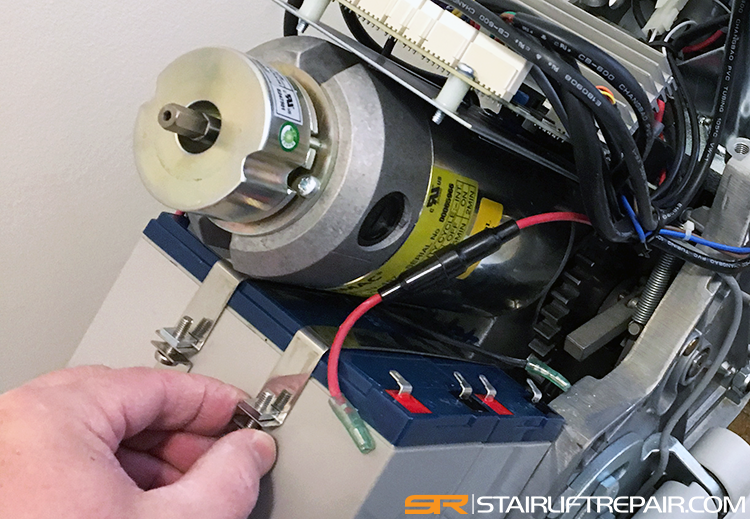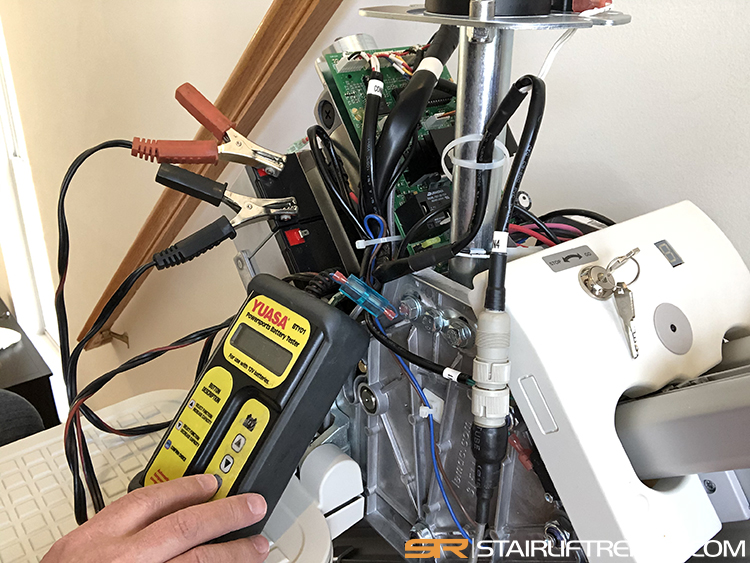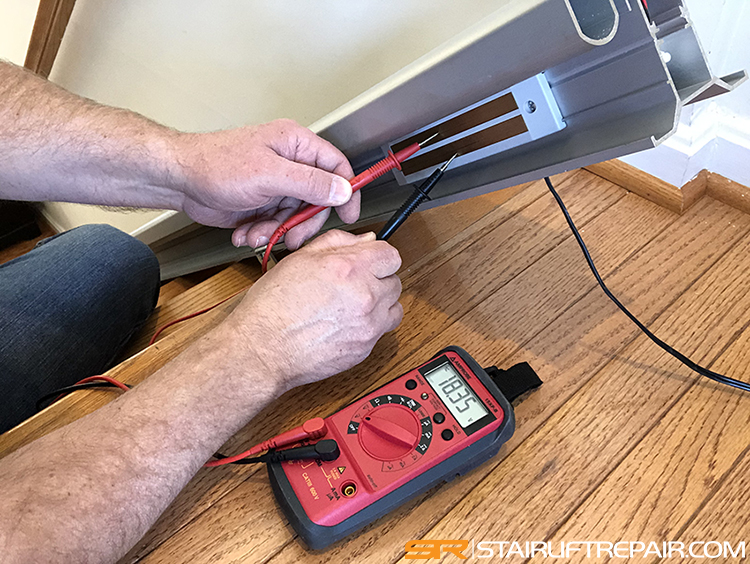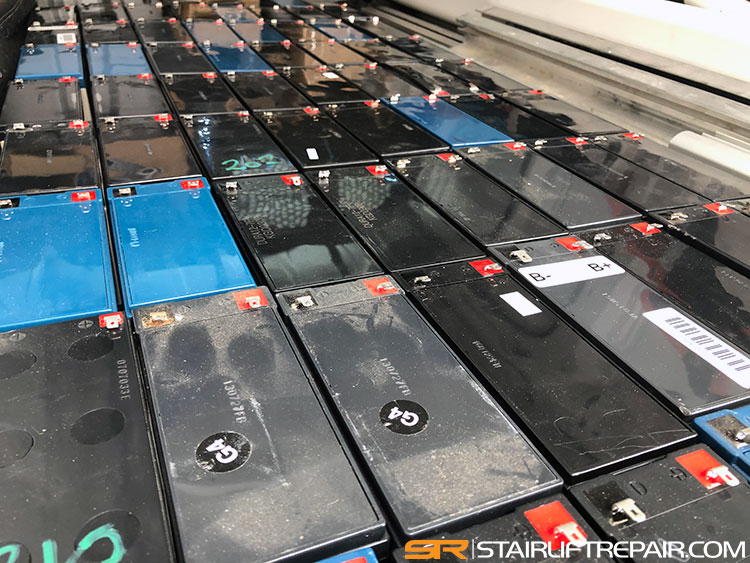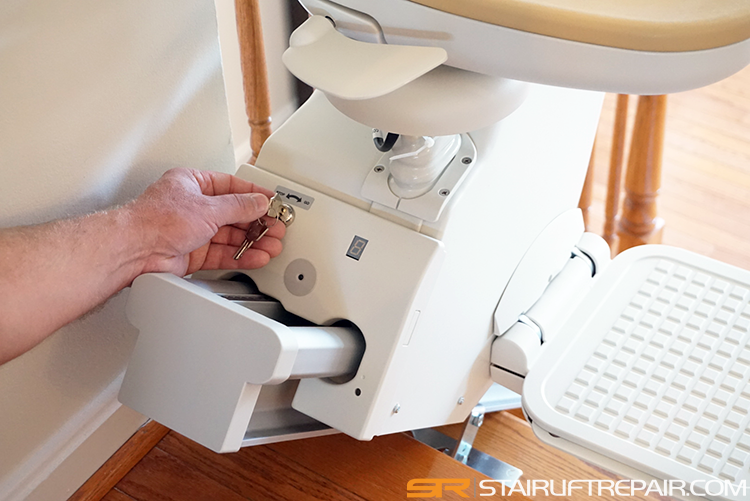Common signs your batteries are going bad and need to be replaced.
The first and most typical sign you will notice is your lift moving slower or going a few inches then stopping and starting in the up direction. While there are other things that can duplicate this problem, batteries are the most likely cause.
When this starts to happen, you will want to call for service quickly before the lift stops altogether. The most obvious sign is if you try to use the lift and it won’t move, there are no indicator lights or beeping sounds.
When chairlift batteries have reached a point of being fully drained and will no longer recharge they will need to be replaced like any other battery. This also happens often if you’ve come back from vacation or the lift has been sitting for several months.
It’s good practice to run your stairlift at least a few times a week to put a load on the batteries. This causes them to work and cycle through the charging process.
When To Have The Batteries Replaced
Stairlifts are battery-powered and operate off two internal 12 DC batteries wired in series to run a 24-volt DC motor. The batteries in your lift are SLA (Sealed Lead Acid) and most use AGM (Absorbed Glass Mat) technology for the higher amperage demand needed by stairlifts.
On average the battery life for a chairlift will range from 3-5 years. This will vary depending on the amount of use, length of stairs, load on the system, and age of the lift. If you rely on your stairlift and find yourself using it daily, we recommend having the batteries changed at a MINIMUM of every three years to prevent breakdowns.
Testing, Checking & Replacing
The proper method for testing stairlift batteries is with a load tester. A service tech will have this device to verify the battery level and cell stability before replacing it. In some cases, only one battery will test as bad however both should be replaced. It’s likely the second battery is close behind and replacing it at the same time can save you money on a second service call.
Also with service, the charging circuit should be checked for the correct voltage from the wall outlet to the rail contacts and the mainboard. Stair lift batteries are charged with an external power supply and transformer that can range from 15vac to 33dc depending on the manufacturer. This transformer needs to supply continuous voltage to charge the batteries. This voltage should be verified, the circuit inspected and the wiring checked for correct grounding or shorting issues.
Pro Tip: It is possible for a digital display to show the batteries as good or charged when in fact they are bad. When batteries drop below a certain voltage, or an internal cell becomes unstable we have seen malfunctions with software causing multiple error codes.
Why Only A Professional Technician Should Check & Change Your Stairlift Batteries
There are many reasons stairlift batteries can go bad including age, transformer problems, power supply issues, contacts, wiring, circuit board problems, motor issues, and more. A technician who services stairlifts on a routine basis is going to be able to identify these problems and repair your lift properly. This is also a great time for maintenance, warranty service and to have the lift checked thoroughly. It’s also extremely important to realize the batteries in your lift store a large amount of power and can cause damage or can be hazardous if not handled properly.
Recycling Stairlift Batteries
When it comes to disposing of old stairlift batteries, it’s another reason to use professional stairlift companies. Stairlift batteries, often made of lead-acid or lithium-ion, contain materials that can be hazardous if not handled correctly. Stairlift companies are equipped with the necessary expertise and tools to ensure that the batteries are safely removed and properly recycled. By choosing a professional service company, individuals not only ensure safety and compliance with standards but also contribute to sustainable practices, preventing harmful substances from ending up in landfills reducing environmental impact.


